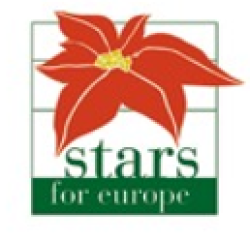5 special care tips for retailers to maximise poinsettia sales in-store

Everyone wants a reputation as a seller of quality plants, because if plants prove difficult for consumers to keep alive, they might avoid buying them again. Poinsettias have an undeserved reputation as a fussy plant, but in fact, caring for them is easy if you remember a few special tips.
The poinsettia experts at SfE are here to give five top tips to help you, your staff, and your customers care for poinsettias correctly, so they can be enjoyed throughout the autumn and winter months.
Tip 1: Close the door, keep your profits inside
With seasonal plants it’s tempting to display them where they will be the first thing customers see when they open the door, but poinsettias should be the exception to this rule. They are native to the hotter climates of central America so they don’t like draughts. This means it’s important to keep them away from open doors or windows in your store, and at a temperatures of no less than 12°C.
Why is this so important? The effects of the cold might not be visible immediately but over time the plant might shrivel and die, and your profit along with it. This could happen either in-store or worse – once your customer gets their poinsettia home. If they think your plants are poor quality, they won’t buy from you again, so you should always protect your star assets by keeping them somewhere draught-free and communicate the same message to your customers. This both demonstrates your knowledge and boosts long-term sales.
Like people, poinsettias need to be wrapped up warmly for their journey home. After a sale, always make sure you and your staff wrap poinsettias in plenty of paper.
Tip 2: Don’t overwater, display the champagne glass trick
The most common way people kill their poinsettias is by overwatering. As a tropical plant, poinsettias don’t need much moisture, so little and often is the key. Follow this tip to make sure you and your staff won’t waste precious time or water in giving plants more than they need.
Every two to three days, a poinsettia in a standard size pot (about 13cm) needs roughly 100ml, which is about as much as you’d fit in a champagne flute. You’ll need less for smaller pot sizes, for example, a shot glass worth of water for a mini poinsettia. As the festive season approaches, it’s fitting to remember this tip with celebratory drinking glasses.
You could even display your plants with an empty champagne flute among them, with a chalkboard sign explaining the trick, to remind staff and customers of the exact amount of water needed.
If unsure, to test whether poinsettias need watering, push a fingertip into the soil. It should be neither soaking wet nor very dry. An average sized poinsettia needs watering every two to three days but smaller volumes of soil will need watering more often, or if they’re kept in a very warm room or near a source of heat.
Make poinsettia watering part of your everyday business routine. For example, on a weekly planner, mark the day and the staff member responsible for doing it, so the job never gets forgotten or gets done too often by mistake!
Reinforce the message by downloading SfE’s free handy icons to put up in your storeroom or workspace, to remind staff to water moderately.
Tip 3: Remember the 15-minute rule
Poinsettias don’t like being waterlogged so always empty the saucer or planter of any excess moisture 15 minutes after watering, to avoid their roots standing in liquid. Alternatively, you can water the plant from the base, letting it drink from the bottom. To do this, pour water directly into the saucer or planter, then place the poinsettia in the water and wait for about 15 minutes for the soil to soak it up. If the water disappears quickly, add a little more. Once the liquid level doesn’t change for several minutes, the plant has had enough and it’s time to discard the excess.
Tip 4: Help customers to help themselves – educate them
Poinsettias are such beautiful, decorative plants that no home should be without one (or more) during the autumn and winter months. Help your customers get the best out of their plant, and encourage them to purchase, by educating them with expert care advice from SfE.
You can do this in many ways, from sharing it on your website and social media, to printing posters, flyers, or care cards – see the next tip to learn more about materials offered by SfE. Don’t forget to use word-of-mouth at the till to share your knowledge in person, making it even more memorable.
This will give existing customers the confidence that you are knowledgeable about your plants, and for those who haven’t yet purchased a poinsettia, learning expert care tips might persuade them to do so.
Tip 5: Use SfE’s free downloadable tools
Visit SfE’s dedicated trade website, www.sfe-trade.com, where you can access free retail-specific downloads from the resources section, including helpful care icons and posters for encouraging your staff to give proper care in-store. You can download a free, readymade newsletter full of poinsettia care tips and email it out to your customer database. You can also share SfE’s new care videos and graphics on your social media channels, to educate your customers. SfE also offers free, downloadable point-of-sale materials such as care flyers, ready for printing and distributing to customers in-store.
Stars for Europe
Stars for Europe (SfE) is the marketing initiative of the European poinsettia growers Dümmen Orange, Selecta One, Beekenkamp Plants and Syngenta Flowers. The initiative was founded in 2000 with the aim of promoting and securing long-term poinsettia sales in Europe. SfE activities currently exist in 22 European countries. From 2021 to 2024, marketing activities will be supported by the EU as part of the "Stars unite Europe" campaign in seven countries: France, Germany, Italy, the Netherlands, Poland, Sweden and Spain.

